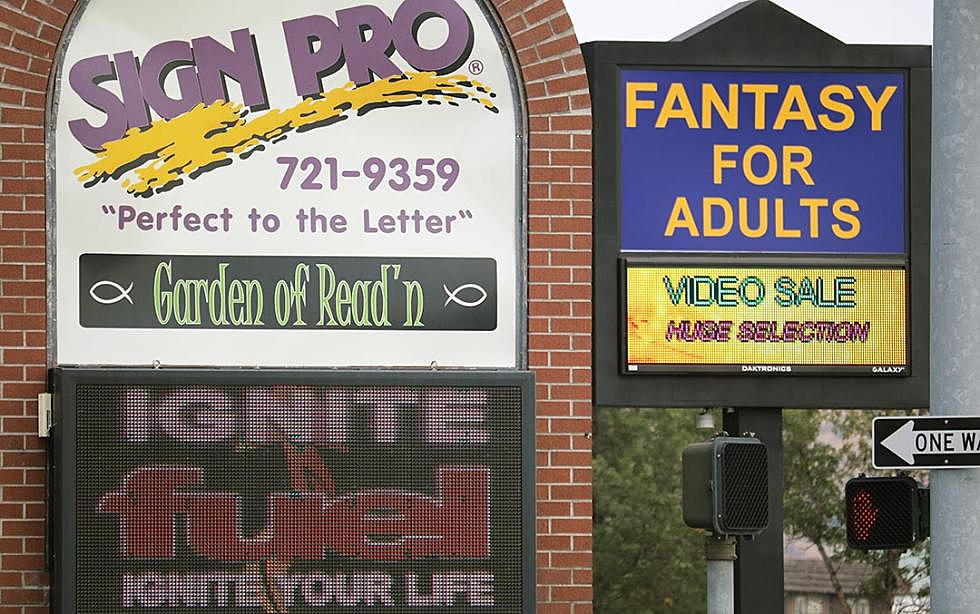
Signs, everywhere there’s signs: City works to rewrite ordinance after court ruling
They hang from windows and walls and tower above the roadway commanding attention. They flash at night, blink and scroll and promote the latest sales on everything from lingerie to cocktails.
While signs may be a part of everyday life in Missoula, what's allowed, where it's allowed and for how long remains a point of regulation and, at times, contention.
The city is locked in at least one lawsuit on the issue, and both the city and county will consider exceptions to local sign laws later this month, allowing taller and larger signs at one Interstate 90 travel plaza and flashing signs at four city schools.
The Missoula City Council is also working to adopt a new ordinance bringing its own sign rules into compliance with a recent U.S Supreme Court ruling. That effort began last month and has raised a number of new questions.
“The language is vague,” Ward 5 council member Julie Armstrong suggested during one recent meeting on signs.
The city's efforts to rework its sign ordinance stems in part from a 2015 ruling by the U.S. Supreme Court in a case brought by the Good News Community Church against the town of Gilbert, Arizona.
In that case, the church placed a temporary sign to advertise its various meeting locations, even while Gilbert's sign ordinance prohibited the display of outdoor signs without a permit. At the same time, however, Gilbert's codes exempted nearly two dozen categories of signs, treating each one differently.
The church filed suit and the Supreme Court later ruled that Gilbert's sign ordinance was “content based,” therefore violating the church's First and 14th amendments. The decision forced cities across the country, including Missoula, to rework their sign laws to ensure they were “content neutral.”
That has launched the city down the road of revamping its entire sign ordinance.
“The bottom line is, city codes across the county must be content neutral,” said Jen Gress with Missoula's Development Services. “They can't take into account the content of the sign itself. The sign codes being proposed will align our sign code with this ruling.”
Gress said the city can regulate signs on other factors beyond content. They include site activity, zoning and physical attributes such as size, location, the number of signs, lighting and timing.
But the draft ordinance under consideration remains long and complex, and it's not always understood by those required to follow it. Some businesses, particularly local car dealers, have been in violation for years without always knowing it.
“I get a lot of questions from businesses in my area on why they aren't allowed to display temporary signage for one day, or for a weekend,” Armstrong said. “Vehicle signs are what I'm keying in on. They'll put signs on the hoods of cars and they're not in the right of way, and they've been told they cannot do that anymore.”
“They've never been able to do that,” Gress answered.
Whether Missoula's new sign ordinance wins approval won't be known until October, when the City Council takes up the issue in a public hearing. But those working to rewrite the ordinance maintain that written rules governing signs create equity, reduce public hazards and keep the visual environment free of unnecessarily clutter.
Laval Means, planning services manager for the city, said local sign ordinances are intended to prevent visual distractions and unsafe conditions brought on by “extensive paraphernalia.”
“The regulations help protect the public safety of people walking by or vehicles driving by and being caught off guard by various distractions, and to address the visual environment,” said Means. “It makes sure we have an equitable treatment for sign users.”
Another type of sign known as a dynamic display is gaining in popularity, though their uses are restricted to certain areas. One stretch of Brooks Street, where such signs are permitted, now includes more than a dozen dynamic signs ranging from Fantasy for Adults to the Montana Club.
Later this month, the city's Board of Adjustments is set to review a variance request for Missoula County Public Schools, which is also looking to install four dynamic displays where such signs aren't currently permitted.
The locations include Rattlesnake, Lowell, Franklin and Cold Springs elementary schools.
The county's Board of Adjustments will also consider a variance request by Love's Travel Plaza at the Wye, which is seeking both larger and taller signs. One request calls for a sign standing 100 feet in height while current rules allow for a maximum height of 32 feet.
Jamie Erbacher, a planner with the county's Community and Planning Services, said a variance request doesn't come with guaranteed approval.
“We look at the surrounding properties,” said Erbacher. “In this case, we're looking at Town Pump, Muralt's and the compatibility with the overall neighborhood. Normally, larger trucks are accessing the property, so larger signs are generally necessary.”
